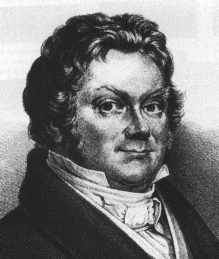Get Today in Masonic History into your Inbox. Sign up today for one of our email lists!
Need an article for your Trestleboard/Newsletter see our Use Policy
Jöns Jacob Berzelius Passes Away

Today in Masonic history Jöns Jacob Berzelius passes away in 1848.
Jöns Jacob Berzelius was a Swedish chemist.
Berzelius was born in Östergötland province in Sweden on August 20th, 1779. His parents passed away when he was young. He lived with family in Linköping, attending the school now known as Katedralskolan. He later enrolled in Uppsala University to become a medical doctor starting in 1796. He graduated as an M.D. in 1802. During his time at the University he worked as an apprentice at the Medevi mineral springs. He conducted an analysis of the spring water. For his medical studies he examined the influence of galvanic current on several diseases.
After graduation, Berzelius moved to Stockholm, Sweden. There he worked as a doctor for a mining company. After discovering his analytical abilities, the mine owner set him up with a laboratory. From 1808 until 1836 he worked with Anna Sundström, who is considered to be the first female chemist in Sweden.
Also in 1808, Berzelius was elected as a member of the Royal Swedish Academy of Sciences. At the time of his election he to Academy, it was in dis-repair. After romanticism had come to Sweden, most felt science was less interesting. In 1818, he was elected the Academy's secretary, holding the position until 1848. During his tenure the Academy is considered to have gone through it's second golden era. In 1822, he was elected a Foreign Honorary member of the American Academy of Arts and Sciences. In 1827, he became a correspondent of the Royal institute of the Netherlands, later he became an associate member.
During Berzelius's time he discovered a variety of things, some are still used today or helped to create modern chemistry. He made a chart of all known elements giving Oxygen an atomic weight of 100. The work provided evidence helping John Dalton's atomic theory. It also disproved Prout's hypothesis, all atoms were built up from hydrogen. He also developed chemical notation, the only difference from the one used today is he used a superscript instead of a subscript to indicate the proportion.
Berzelius also is credited with discovering the elements silicon, selenium, thorium, and cerium. He was also the first chemist to use the term polymer although his definition of a polymer is different from the one used today.
Berzelius passed away on August 7th, 1848 in Stockholm, Sweden.
Berzelius was a member of St. Erik Lodge in Stockholm which is a St. John's lodge under the Swedish Rite.
This article provided by Brother Eric C. Steele.

